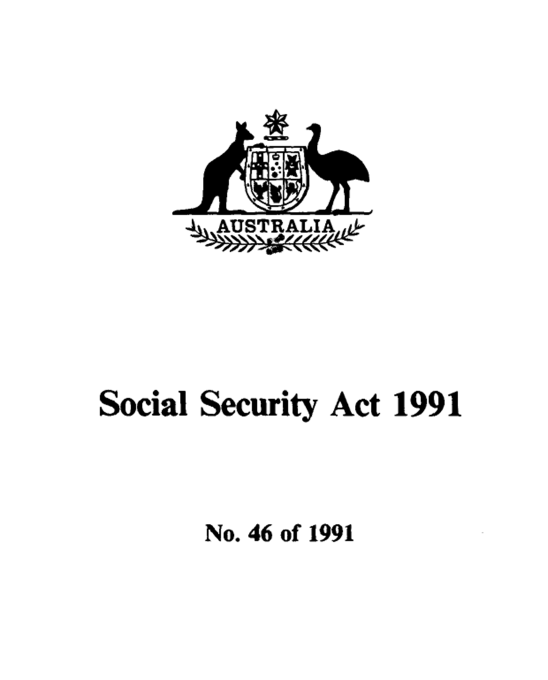
Government simplifies Social Security Act
The government simplified social security legislation, with the intention of making it easier to understand. They also included passages encouraging positive change for Aboriginal and Torres Strait Islander communities.
In administering this Act, the Secretary is to have regard to ... the need to be responsive to Aboriginality and to cultural and linguistic diversity.
| Attachment | Size |
|---|---|
| social-security-act-1991-excerpts.pdf | 275.25 KB |
| Attachment | Size |
|---|---|
| social-security-act-1991-excerpts.docx | 103.08 KB |
By the 1980s, the original social security Act included so many amendments that it was too complex. The government introduced the Social Security Act 1991 to simplify the law. They said it would make it easier for people to ‘obtain benefits to which they are entitled’ (Jenkins in HR 1991:963).
To make it easier to use, the new Act was written in ‘clear English’ and included a reader’s guide. Still, it was difficult to describe the complicated system of payments in a simple way. The final Act was over 1,000 pages long.
While the language was simplified, the Act didn’t include any significant policy changes. However, soon after the Act came into effect, the government made major changes to payments for the first time in many years.
Passages affecting Aboriginal and Torres Strait Islander peoples
The Act included a number of passages relating to Aboriginal and Torres Strait Islander peoples and people living in remote communities. This was significant as the government had removed references to Aboriginal peoples from the Act in the 1960s.
However, the new clauses encouraged inclusion, rather than exclusion, as previous references to Aboriginal peoples in legislation had done.
Call to be responsive to Aboriginal customers
A specific reference to Aboriginal and Torres Strait Islander peoples was in Section 1296(a). The Act asked that the DSS Secretary be ‘responsive to Aboriginality and to cultural and linguistic diversity’.
This instruction reflected the government’s changed attitude towards meeting Aboriginal and Torres Strait Islander peoples’ needs.
Throughout the 1970s, DSS had been making an effort to improve their services for Aboriginal and Torres Strait Islander peoples. They had started interpreter services, introduced Aboriginal Liaison Officers and made recommendations to government in reports.
Issues with the work test in remote communities
While not as specific, some other sections of the Act tried to account for Aboriginal and Torres Strait Islander people’s circumstances.
For example, at the time to get Unemployment Benefit people had to satisfy a ‘work test’. This meant showing that they were taking ‘reasonable steps to obtain paid work’. This was difficult for Aboriginal and Torres Strait Islander people living in remote areas because there often were no jobs to apply for.
This Act tried to address this difficulty in the section ‘Relief for work test – certain persons in remote areas’. This section said that DSS should account for a range of factors, including the ‘cultural background of the person’. It also said it was ‘unreasonable’ to expect people in remote areas to satisfy the work test in order to be eligible for Unemployment Benefit.
Changes following the Act
The Act in 1991 didn’t contain changes to payments. However, the government made significant changes to payments soon after the Act came into effect. This included policy changes recommended in the 1988 Social Services Review report.
In July 1991, the government introduced Job Search Allowance and Newstart Allowance to replace Unemployment Benefit for people looking for work. These payments had a new ‘activity test’ instead of a work test.
The government also introduced Disability Support Pension and Sickness Allowance in November 1991. These replaced Invalid Pension, Sickness Benefit and Sheltered Workshop Allowance.
Unemployment Benefit and Invalid Pension had been the same for a long time. Changes meant DSS had to communicate clearly about these payments to all customers, including Aboriginal and Torres Strait Islander customers.
You can read the full Social Security Act 1991 on the Federal Register of Legislation website.
Citation
Australian Government (1991) Social Security Act 1991, Federal Register of Legislation, accessed 24 May 2023.
